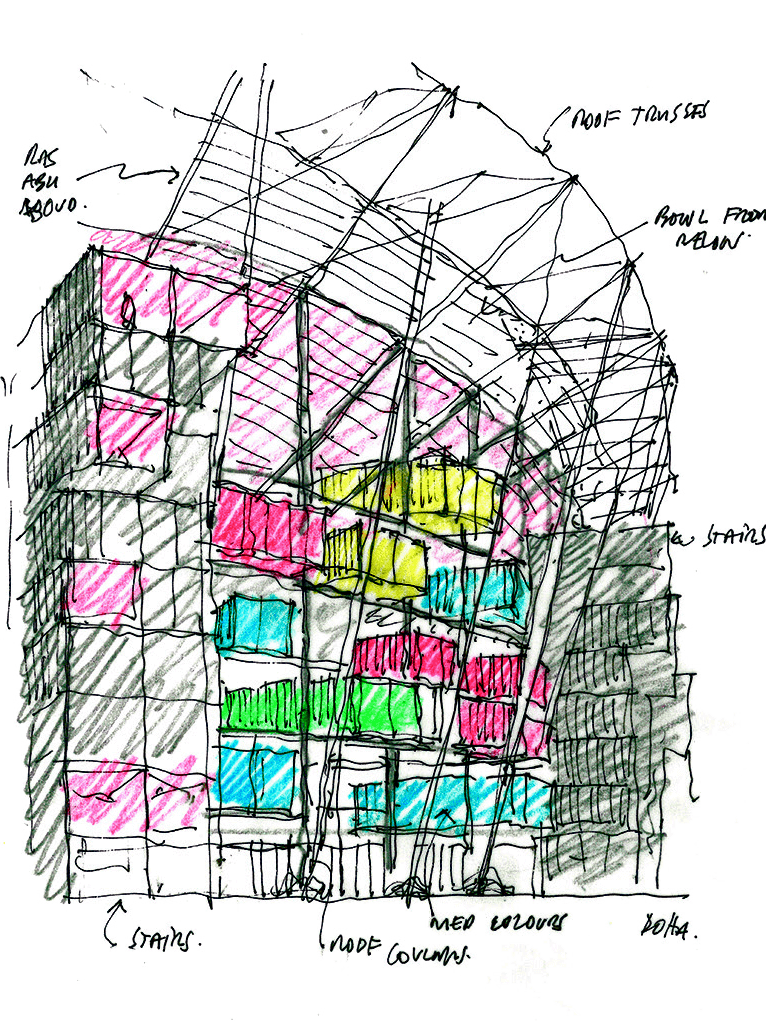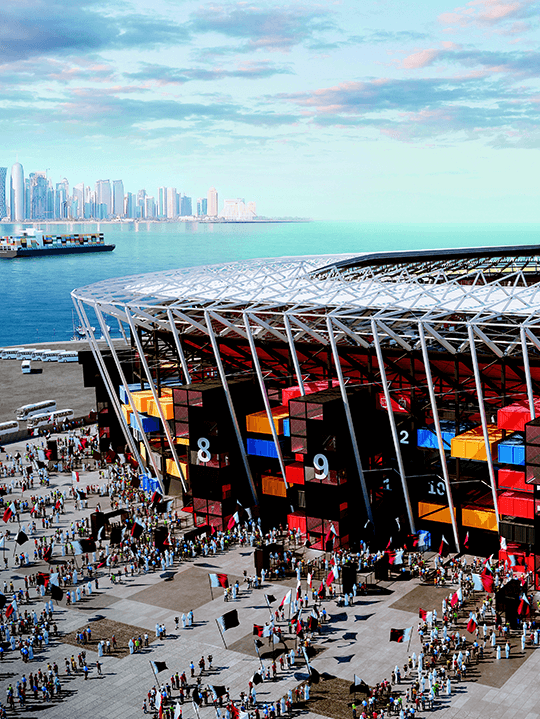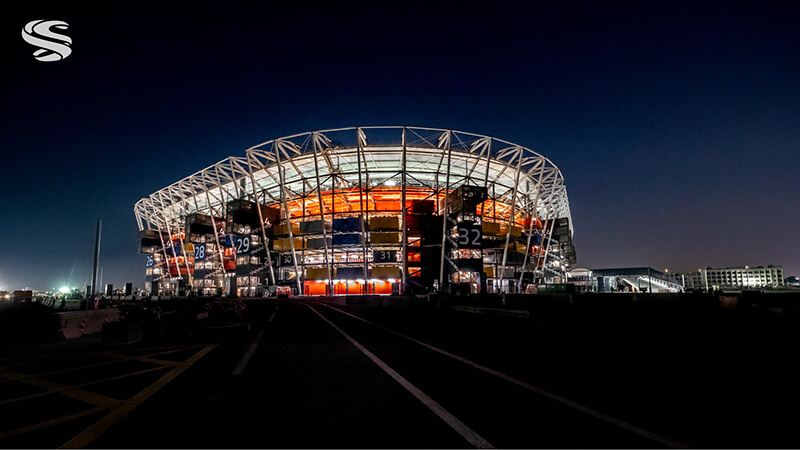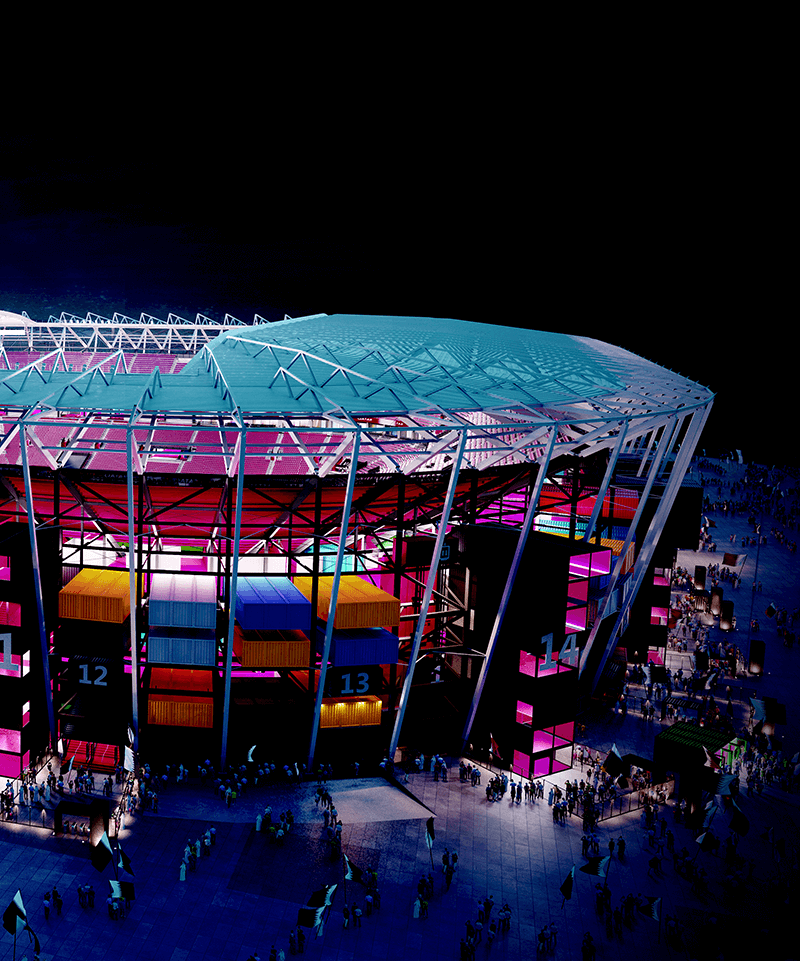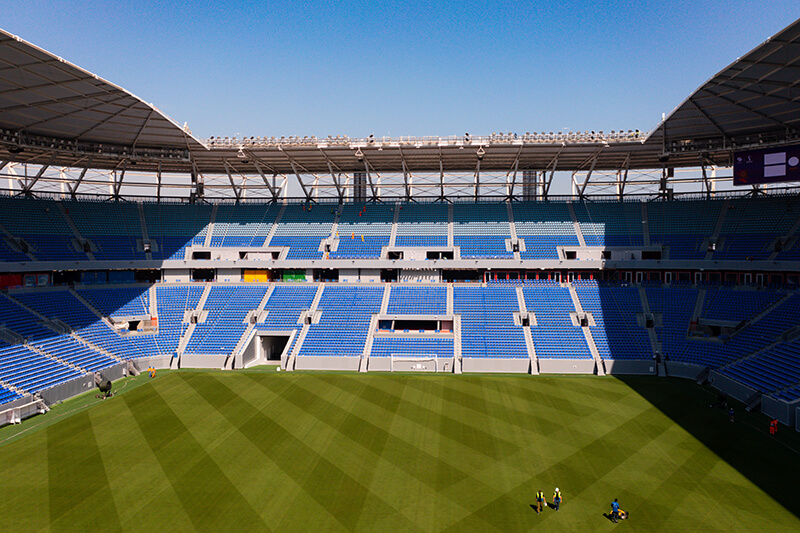Stadium 974 in Doha
Container becomes icon
Probably the most innovative of the eight stadiums newly built for the 2022 FIFA World Cup Qatar™.
Stadium 974 will not be rebuilt after the World Cup, but dismantled. That is new.
Stadium 974 stadium is one of the most innovative of the eight stadia for the FIFA World Cup Qatar 2022™ and is also planned to fully resolve the legacy issue. After the tournament it will be entirely dismantled and shipped to other locations.
The idea of using shipping containers, a transport module used in world commerce, enables the structure as well as the stadium facilities, toilets, retail areas and prayer rooms to be unplugged,
disassembled and then shipped to other countries or distributed to other areas of Qatar.
The very first thought when confronting a white sheet of paper was to develop another iconic and amazing stadium design. However, the design team, formed with our office, and Schlaich Bergermann & Partners as Structural Engineers, and Hilson Moran as MEP Engineers, began from the very beginning to feel this was an opportunity to develop something never done before, a stadium which would finally resolve the legacy values for such an international event.
Stadium 974 wants to be the opposite of a “white elephant”, namely completely demountable and transportable.
So many times have countries developed football stadia for a major event, whether a World Cup or the Olympics, which afterwards had no real economic or socially sustainable legacy use. Stadia after major international events have been left to rot, as the massive costs of their upkeep
were not accounted for in any budgets due to the lack of a real economically sustainable legacy plan. Many such expensive and underused ‘white elephant’ structures can be found in countries such as Greece, Russia, Brazil and South Africa.
The need for the stadium to be dismounted and taken to other locations is paramount for the success of the idea. For this reason the architects and engineers strove to establish rational and cost-effective construction methods, with as few parts as possible, essentially by applying module elements.
Stadium 974 is located directly by the sea.This provides the opportunity to load and unload the stadium containers.
If a stadium is to be cost-effective there needs to be a rationalisation of the structural and engineering systems. A system which is able to be repeated is essential to achieving a cost-effective project, allowing for both simple construction and simple and effective deconstruction.
The main idea for the stadium was to use standardised shipping containers as the prime ‘building blocks’.
The entire stadium was built with only ten different modules.
This solution means the project is totally modular. The columns and beams are all designed to be bolted together, allowing for easy assembly during construction; after the event the whole structure can be unbolted, disassembled and transported with great ease.
Stadium 974 could become a milestone in sports architecture for major events. Especially if we see it again at the next World Cup.
The stadium could thus be fully functional for any subsequent major sport event such as the 2026 Asian or FIFA World Cup.




